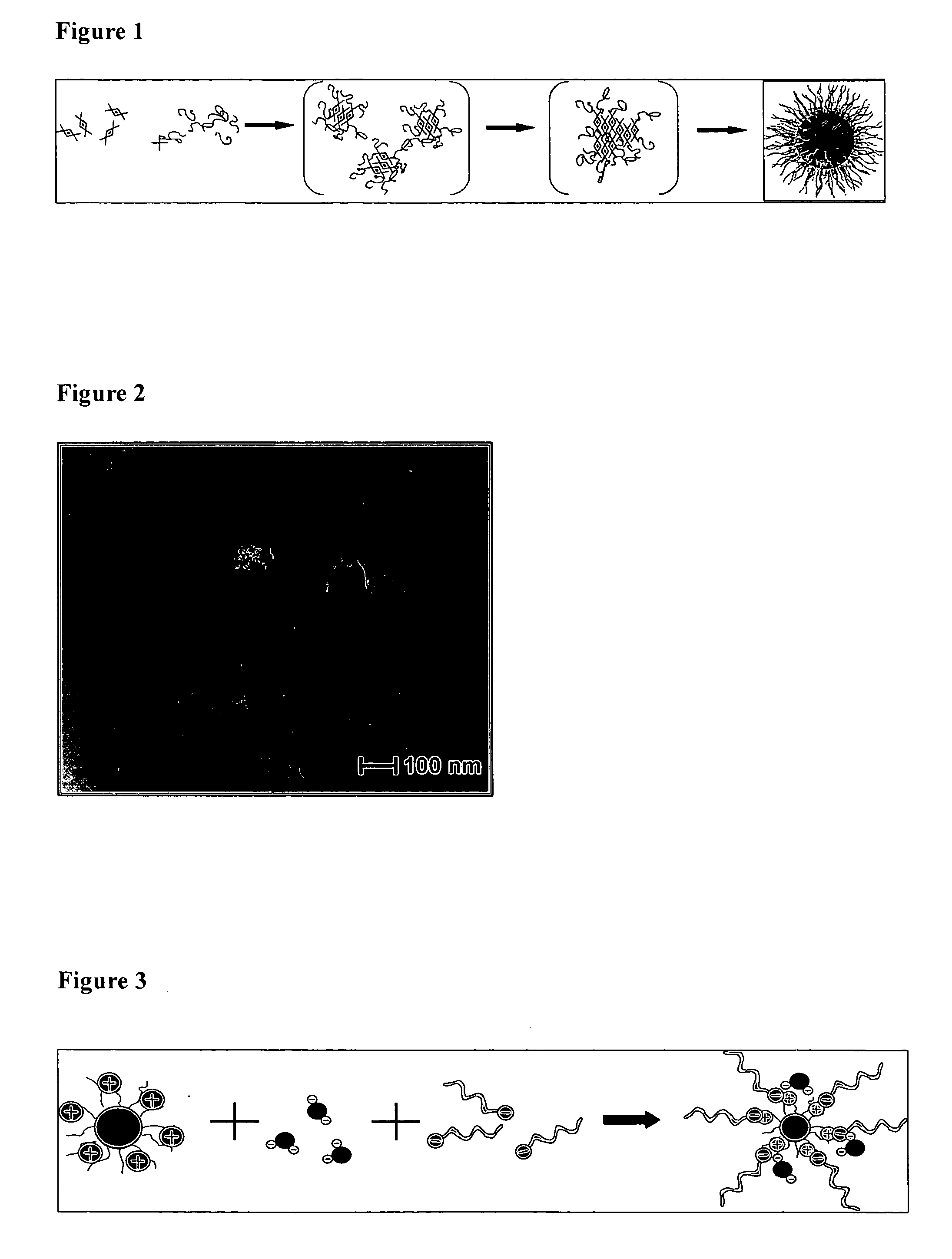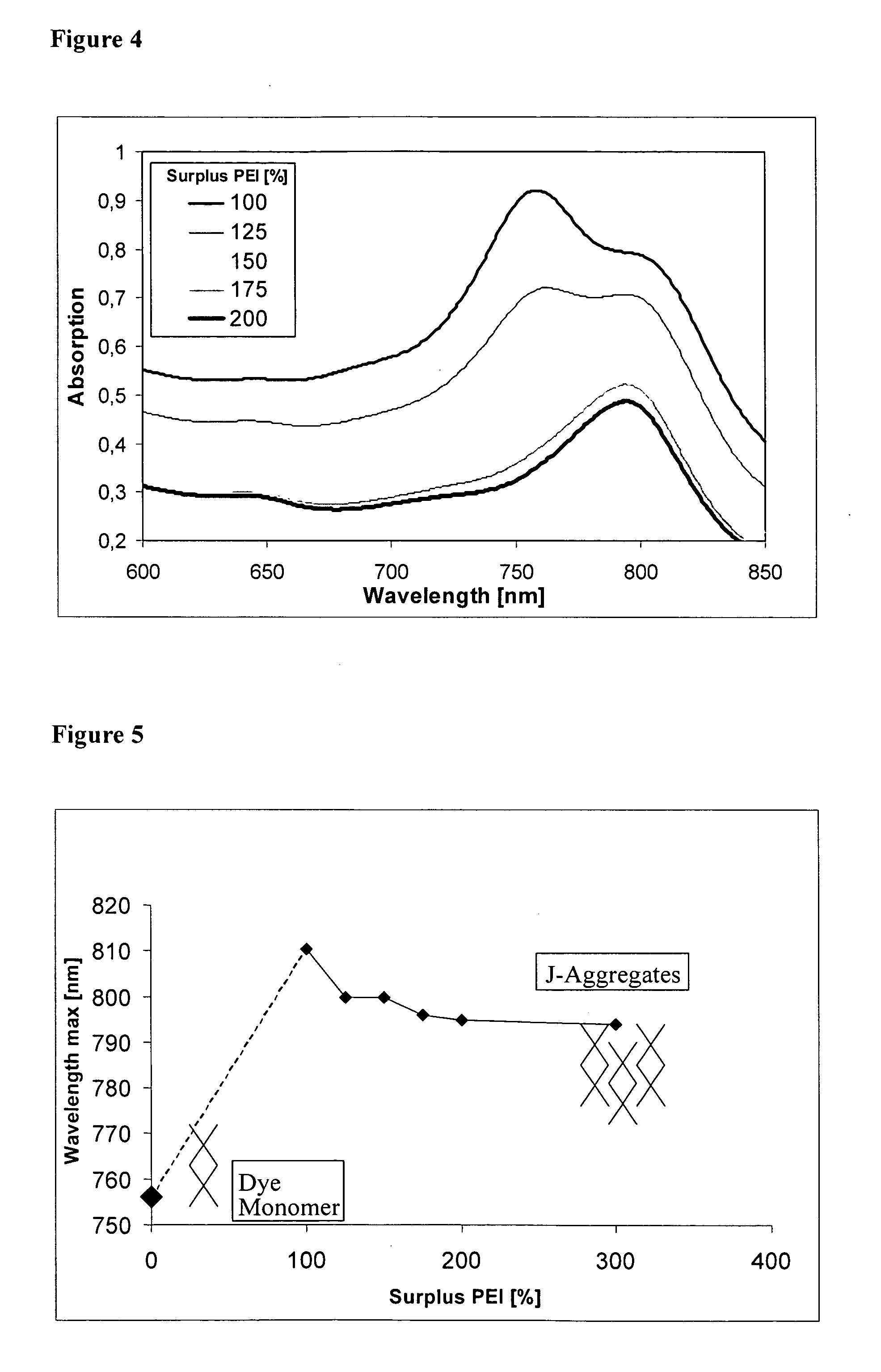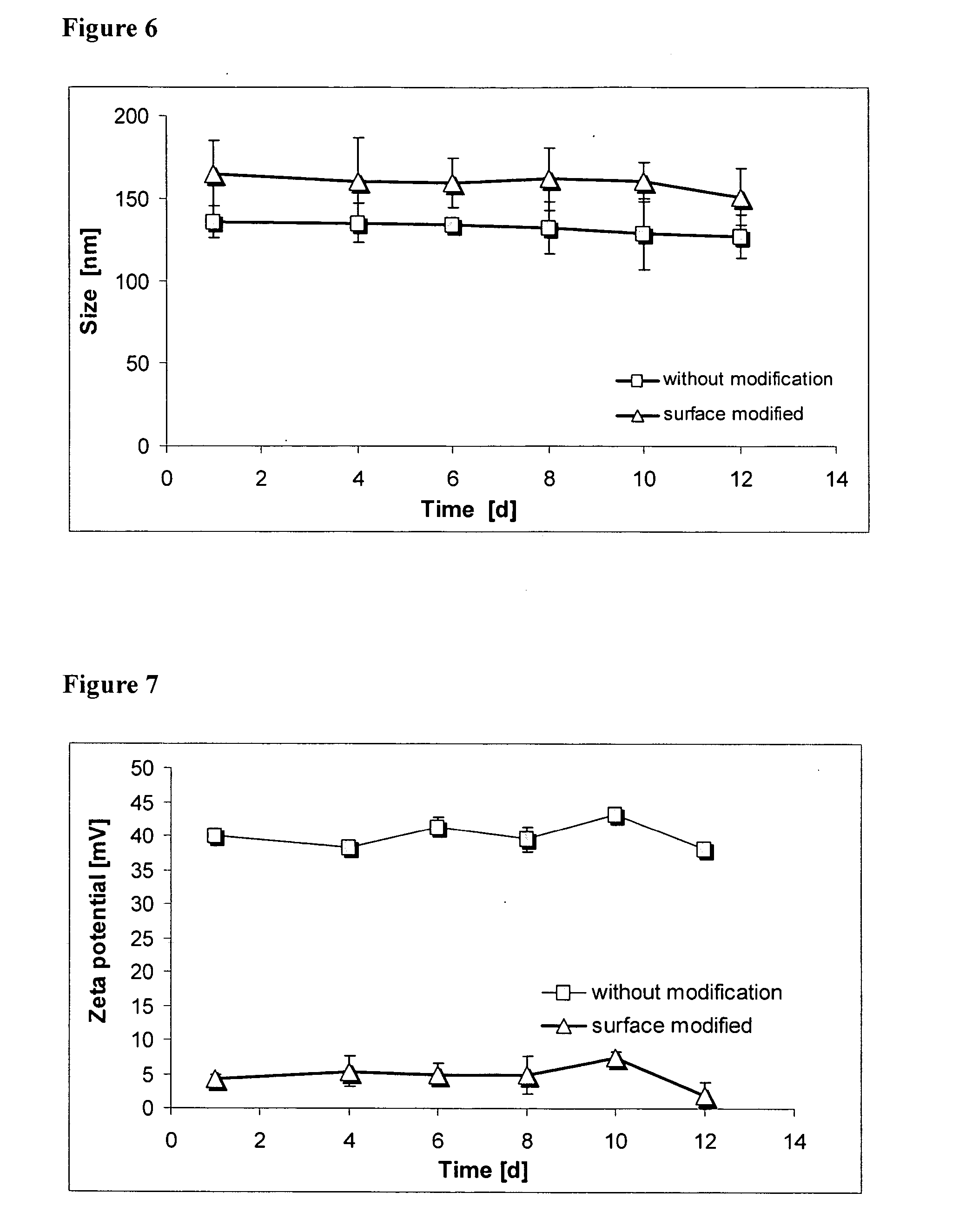Optically fluorescent nanoparticles
a technology of fluorescent nanoparticles and nanoparticles, applied in the field of optically fluorescent nanoparticles, can solve problems such as excess charge, and achieve the effects of enhancing the sensitivity of in vivo imaging, enriching tumour tissue, and high dye concentration for detection
- Summary
- Abstract
- Description
- Claims
- Application Information
AI Technical Summary
Benefits of technology
Problems solved by technology
Method used
Image
Examples
example 1
Optically Fluorescent Nanoparticles Based on PEI
(a) Preparation of PEI Based Nanoparticles
[0147] An aqueous solution of 0.1% (w / v) PEI (1.8, 10, 70, or 750 kDa) is gently stirred, and an aqueous solution of 0.02% (w / v) TITCC is instantly added. This composition is further agitated at about 4° C. for about 30-45 minutes under UV protection. The aggregation progress is monitored by UV-Vis spectra starting from 900 nm down to 600 nm. TITCC dye has been shown to possess fluorescent activity when incorporated into PEI nanoparticles, and aggregate formation can be monitored on the basis of a shift of the UV-Vis spectrum (FIG. 4) The nanoparticle dispersion is concentrated by ultrafiltration and lyophilised after addition of a cryoprotector such as mannitol or lactose.
[0148] As shown in FIG. 4, the complete formation of dye molecules to J-aggregated had taken place in case of 150, 175, and 200% surplus of PEI. This is confirmed by the absence of the starting wavelength of 756 nm of the...
example 2
Nanoparticles Based on Protamine Sulphate
[0159] Cationic protamine sulphate is widely used in vivo as heparin antagonist. Thus, nanoparticles comprising protamine sulfate as cationic polyelectrolyte are superior due to experienced less toxicity.
example 3
Nanoparticles Based on P(DMAPMAM)
[0160] A solution of 0.1% P(DMAPMAM) in water / acetone (10:1. by volume) is gently stirred while a solution of 0.02% TITCC is added instantly. Under further agitation, formation of the aggregates takes place while acetone is removed.
PUM
| Property | Measurement | Unit |
|---|---|---|
| hypsochromic | aaaaa | aaaaa |
| hypsochromic | aaaaa | aaaaa |
| hypsochromic | aaaaa | aaaaa |
Abstract
Description
Claims
Application Information
 Login to View More
Login to View More - R&D
- Intellectual Property
- Life Sciences
- Materials
- Tech Scout
- Unparalleled Data Quality
- Higher Quality Content
- 60% Fewer Hallucinations
Browse by: Latest US Patents, China's latest patents, Technical Efficacy Thesaurus, Application Domain, Technology Topic, Popular Technical Reports.
© 2025 PatSnap. All rights reserved.Legal|Privacy policy|Modern Slavery Act Transparency Statement|Sitemap|About US| Contact US: help@patsnap.com



